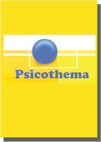Abstract
This paper reviews the available research evidence on the effectiveness of hot spots policing programs in reducing crime and disorder. The research identified five randomized controlled experiments and four non-equivalent control group quasi-experiments evaluating the effects of hot spots policing interventions on crime. Seven of nine selected evaluations reported noteworthy crime and disorder reductions. Meta-analyses of the randomized experiments revealed statistically significant mean effect sizes favoring hot spots policing interventions in reducing citizen calls for service in treatment places relative to control places. When immediate spatial displacement was measured, it was very limited and unintended crime prevention benefits were associated with the hot spots policing programs. The results of this review suggest that hot spots policing is an effective crime prevention strategy.Downloads
Download data is not yet available.
